Many Pakistani students preparing for university admission overseas wonder which English test to take. Both IELTS Academic and PTE Academic are accepted by universities in English-speaking countries, but they differ in format, scoring, and test experience.
We’ll break down the key differences – from test structure and difficulty to global acceptance – with a focus on what matters for Pakistani students. By the end, you’ll understand which exam might be easier and better suited to your study-abroad goals.

Test Formats and Structure
Both IELTS and PTE evaluate the four language skills (Listening, Reading, Writing, Speaking), but their formats are quite different. IELTS Academic (used for study abroad) is available as a paper or computer test.
Its Speaking section is a face-to-face interview with an examiner, and Writing tasks include essays and report descriptions (e.g., charts or graphs). In contrast, PTE Academic is fully computer-based, lasting about 3 hours. PTE combines Speaking and Writing into one section (you speak into a microphone and type text into a computer).
For PTE, responses are recorded – there is no live examiner (which removes human bias). PTE’s Listening and Reading tasks involve summarizing texts, multiple-choice, and reordering paragraphs, while IELTS uses traditional question types (e.g., matching headings, note completion).
- Speaking: IELTS – talk with a person; PTE – talk to a computer mic. (Some find PTE less nerve-wracking as there’s no interviewer).
- Writing: IELTS – handwritten essay (or typed on computer-based IELTS); PTE – type all answers on computer, including summaries and essays.
- Reading/Listening: Difficulty levels are similar in both tests. Note: IELTS allows using paper (even for Listening answers) or computer, while PTE is always on screen.
- Duration: IELTS ~2h45m + speaking interview; PTE ~3 hours total.
- Flexibility: In IELTS (on computer), you can skip and return to questions. PTE requires you to answer sequentially – you cannot go back once you move on.
Scoring and Results Timeline
IELTS uses a band score (0–9) for each skill, averaged to an overall band. Scoring is done by human examiners. PTE uses an automated score (10–90), with algorithms grading each response. Many test-takers feel PTE’s AI scoring is “unbiased,” while IELTS’s human marking can sometimes seem more subjective.
Results speed is a big factor: PTE returns scores in about 2 days. IELTS on the computer delivers results in 3–5 days, and paper-based IELTS takes about 13 days. (Note: As of 2025, British Council Pakistan is moving fully to computer-based IELTS with results in ~1–3 days.) Fast results mean quicker university applications.
IELTS offers a unique “One Skill Retake” option: you can resit just one section (listening, speaking, etc.) to improve that score. PTE does not allow this – if you re-test, you must retake all sections. This flexibility can reduce pressure for candidates who narrowly miss a target band.
Preparation and Difficulty
Which test is “easier” depends on your strengths. Overall, many students (around 60–70% in one survey) reported finding PTE easier. PTE is often preferred by computer-savvy candidates who like fast feedback: it offers tutorials and automated practice, and you answer on screen. The speaking test in PTE is to a computer, which some students find less intimidating than a live interviewer.
IELTS may suit those who prefer a traditional exam style. If you write well by hand or enjoy the conversational aspect, IELTS’s live Speaking test could be an advantage. Also, IELTS lets you see a band score (0–9) which is easy to interpret, whereas PTE’s scale requires conversion charts for band equivalents.
Below is a quick rundown of perceived difficulty by section:
- Speaking: IELTS (face-to-face) vs PTE (microphone). If you get nervous talking with an examiner, PTE might feel easier. If you’re comfortable chatting, IELTS can be more natural.
- Writing: IELTS (essay, possibly graph) vs PTE (summarize & essay). Both require similar skills, but IELTS handwriting can trip up those unused to essays with a pen. PTE requires fast typing and concise summaries.
- Reading: Both tests have multiple-choice and fill-in questions. Difficulty is comparable. Note: IELTS on computer is multiple-choice too, so format-wise they’re alike.
- Listening: Both have audio clips and questions. IELTS answers (long form) versus PTE (often typed) might feel different, but neither is significantly harder.
- Test Interface: PTE is fully digital – you won’t pencil anywhere. If you’re not comfortable with computers, this can be a downside. IELTS (on paper) uses pen and paper; computer-based IELTS blends computer with human interaction.
- Answer Flexibility: IELTS lets you skip a tough question and come back. PTE forces you to answer in order, with only one correct answer per item. If you like revisiting questions, IELTS has the edge.
In practice, success in either exam requires good preparation. British Council Pakistan offers free IELTS practice tests and videos, and many online resources and coaching centers (e.g. see our PTE preparation guide) can help for PTE. Identify your weak skill areas and choose mock tests accordingly.
University Acceptance and Recognition
For academic study, both tests are widely accepted by universities in popular destinations (UK, US, Canada, Australia, etc.). However, IELTS has broader recognition: over 11,000 institutions accept it globally. PTE is accepted by about 6,000 universities worldwide. In practice, nearly every major university will list IELTS, and many list PTE as an alternative.
Both tests meet most graduate school requirements. For example, a typical admit might need IELTS 6.5–7.5 or PTE 60–80 depending on the program. Always check your target university: some schools in Australia or the UK accept only IELTS or PTE, or have slightly different score equivalencies. But in general, a strong score in either test fulfills language requirements for study visas and admissions.
Considerations for Pakistani Students
Test Access: In Pakistan, IELTS is far more accessible than PTE. The British Council operates IELTS in 18 cities nationwide (Islamabad, Lahore, Karachi, Peshawar, Multan, Quetta, etc.) and even offers 7 computer-based centers. PTE centers are currently in just three cities: Lahore, Islamabad, and Karachi.
This means many students may have to travel farther for PTE. However, PTE test dates are frequent (weekday slots year-round), which adds convenience if a center is nearby.
Cost: Both tests cost roughly the same. PTE in Pakistan is $215 (~PKR 60,000). IELTS fees (British Council/IDP) are around PKR 60,000–67,000 depending on city and type. So price shouldn’t be the deciding factor; budget similarly for either.
Preparation Resources: Karachi, Lahore, and Islamabad have many IELTS prep centers, reflecting demand. Newer PTE coaching providers are emerging, but fewer veterans. Online tutorials and apps exist for both. Notably, the British Council provides free IELTS preparation material and mock tests, while PTE preparation often relies on paid courses. Pakistani students should leverage these resources early.
Language and Accent: Pakistani English generally follows British norms, which suits IELTS (a UK-based exam). PTE’s computer scoring is trained on various accents, and the British Council assures that your accent won’t penalize you. Either way, practicing with sample questions will make you comfortable.
Common Struggles: Many students find the speaking section most anxiety-inducing. If you freeze up in face-to-face interviews, PTE’s microphone approach could ease that stress. Conversely, if you excel in personal conversation, IELTS gives you that chance. Time pressure on writing can also be tough – PTE’s strict timing and forced move-on can be challenging, whereas IELTS lets you manage time across tasks.
Visa and Admissions: For academic purposes, both exams are accepted for study visas in Canada, UK, Australia, etc. (though we’re focusing on academics, not immigration). Pakistani students should ensure their universities or scholarship programs don’t require a specific test. For example, some Australian universities are starting to accept PTE more, but many still list IELTS. If in doubt, IELTS is always safe because of its ubiquity.
FAQs:
Q: Is PTE easier than IELTS?
It depends on you. Many find PTE easier if they’re comfortable on computers and prefer typing to handwriting. Others prefer IELTS’s human interaction and paper format. Consider your strengths: if you perform better without face-to-face pressure and like quick results, PTE might feel easier.
Q: Do top universities accept PTE?
Yes – most major universities in the US, UK, Australia, and Canada accept PTE Academic for admissions, just as they accept IELTS. However, always check the specific university’s requirements. Some programs (especially in the UK) may still list only IELTS on their website, so confirm if PTE scores are allowed.
Q: Which gives faster results – PTE or IELTS?
PTE is faster. You typically get PTE scores in about 2 days. IELTS on computer takes about 3–5 days, and paper-based is about 13 days (though British Council Pakistan is moving to computer-only in 2025 for 1–3 day results). Faster results mean PTE can speed up your admission process.
Q: How do I decide between paper and computer for IELTS?
Since March 2025, British Council Pakistan runs only computer-based IELTS, which gives faster scores (1–3 days). If you prefer paper, look for IDP locations (they still have some) but be aware of the longer waiting time. Either way, IELTS content is the same; choose the mode that suits your comfort with computers.
Q: Can I retake one section of PTE or IELTS?
Only IELTS (on computer) offers a One Skill Retake, allowing you to re-sit one part (e.g. just Speaking). PTE has no partial retake – if you want to improve, you must retake the full test.
Q: Are costs different?
In Pakistan, PTE and IELTS cost about the same (roughly PKR 60–65k). There’s no clear financial advantage to choosing one test over the other.
Q: Where should I take the test?
IELTS is available in far more cities (18 across Pakistan) compared to PTE (Lahore, Islamabad, Karachi). Check which is more convenient to reach. Also, book early: IELTS has many test dates, and PTE has daily slots, but seats can fill up quickly.




